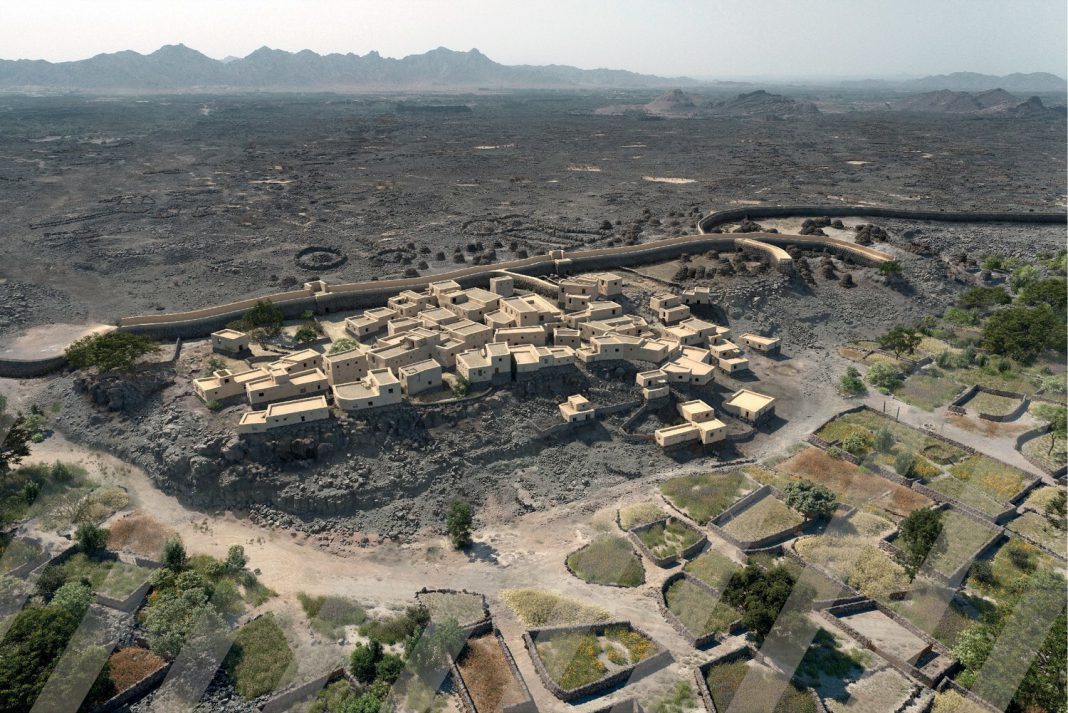The Royal Commission for AlUla (RCU) has announced that a new archaeological research has revealed an exceptional bronze age town in the Khaybar oasis of north-west Saudi Arabia.
The discovery by a team led by Dr Guillaume Charloux of the Khaybar Longue Durée Archaeological Project and Dr Munirah Almushawh from the RCU confirms a major transition from mobile, nomadic life to settled, town life in the second half of the third millennium BCE.
Known as Al Natah, the newly discovered town in Khaybar is the first to provide clear evidence for differentiated functional areas – notably residential and funerary – within fortifications.
Al Natah was built around 2400-2000 BCE and endured until 1500-1300 BCE. The small town was home to some 500 people in its 2.6 hectares and was protected by the 15-km stone rampart that encircled the Khaybar oasis.
Published in the peer-reviewed journal PLOS One, the new research provides significant evidence to further challenge the picture of mobile pastoral-nomadism as the dominant economic and social way of life of northwest Arabia in the Early and Middle Bronze Ages.
It also implies that oases such as Khaybar were carefully controlled and highly valued landscapes that, with the advent of agriculture, supported permanent populations and must have been dynamic centres for regional exchanges and other interactions with the local mobile communities.
This nascent urbanism and increasing social complexity had a profound impact on socio-economic organisation in the region.
While northwest Arabia in the Bronze Age was largely populated by pastoral mobile groups, the region was also dotted with interconnected, monumental walled oases centred around small fortified settlements, such as Tayma and Qurayyah.
Prince Badr bin Abdullah bin Mohammed bin Farhan Al Saud, the Governor of RCU and Minister of Culture for Saudi Arabia, said: “This important archaeological discovery highlights the Kingdom’s global significance in the field of archaeology and confirms the depth of civilisation that the land holds.”
The Khaybar oasis is situated at the edge of the Harrat Khaybar lava field and formed by the confluence of three wadis amid an otherwise largely arid area. At the northern outskirts of the oasis, al-Natah lay buried under piles of basalt boulders for millennia.
“This discovery reinforces the Kingdom’s efforts in protecting cultural and historical heritage and emphasises the importance of exchanging knowledge and expertise with the world to enhance awareness of our shared human heritage,” he stated.
The new research was sponsored by RCU and the French Agency for the Development of AlUla (Afalula). The Archaeology, Collections and Conservation team at RCU is directing one of the world’s largest and most ambitious archaeological research programmes, fulfilling its goal to broaden global awareness of the AlUla region as a premier cultural heritage landscape and destination.
Dr Charloux, from the French National Centre for Scientific Research (CNRS), said: “Our discovery challenges the ancient model of north-west Arabia in the Bronze Age as a vast desert populated by groups of nomadic pastoralists. The discovery of the Al Natah site, dated to the late Early and Middle Bronze Ages, confirms that rural urbanism arose earlier than previously believed in this region.”
“Directly accessible below the surface, Al Natah town represents almost a thousand years of use that for the first time makes it possible to consider the complexity of a sedentary settlement in a walled oasis during the Bronze Age,” he added.


